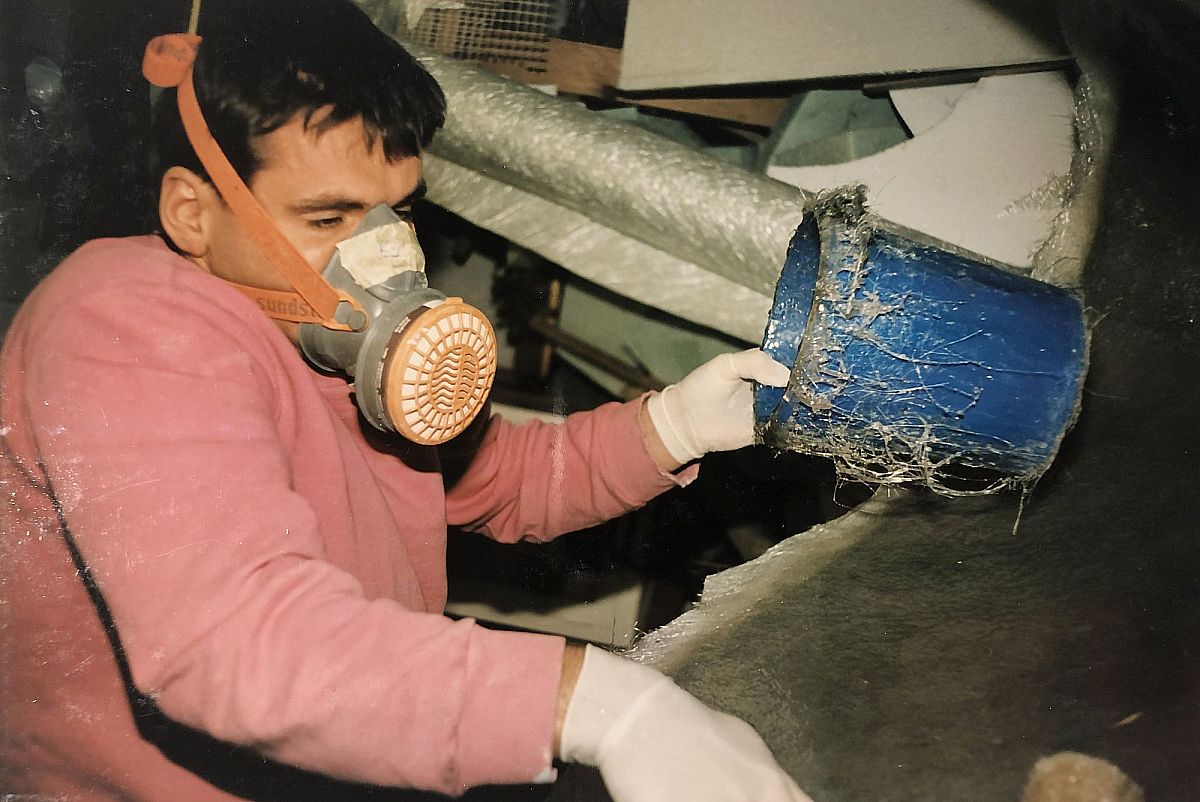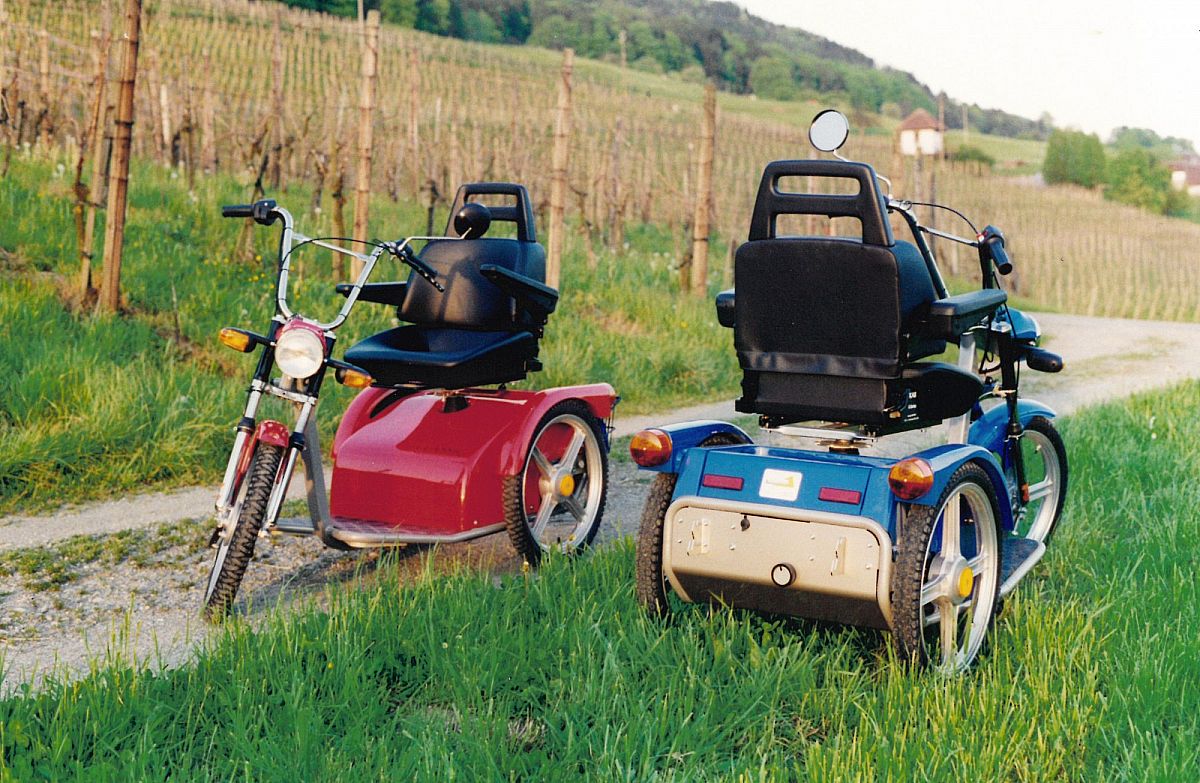What next? An old schoolmate helps

Vehicles for senior citizens were a gap in the market, they did not exist in Switzerland at that time.
There I was with my plans for a senior citizen's vehicle, also with a possible buyer - the owner of a medical supply store from Bülach, but without a workshop. I remembered a schoolmate from my primary school days. His father had a steel construction workshop in Andelfingen. I got in touch with him. We quickly came to an agreement and for a small contribution towards costs I was allowed to use his metal workshop. He himself helped me with words and deeds and so the whole steel construction of the first prototype of the CLASSIC came into being. I made the plastic parts from glass-fibre reinforced epoxy resin in my father's garage in Andelfingen, and yes: he still had to leave his own car outside. The first senior vehicle was assembled and tested extensively.
During this time, the name "CLASSIC" for the nascent senior citizens' vehicle was also solidified. I searched for alternatives for a long time - without success. I also asked everyone around me and they contributed ideas for the name - but I didn't like any of them. "CLASSIC" remained the name of my senior citizens' vehicles.
I tested the first vehicle I built extensively and then I did all the registration and type testing. The tests took longer than expected and my money was running out. I was no longer able to buy the material I needed for the first series of 20 vehicles. I had already promised the vehicles to the boss of the medical supply store. My parents helped me out financially: I got an advance on my inheritance and was able to start buying the missing parts. So I ordered all the chassis from the metalworker, started to buy small parts, made plastic parts and began to produce the first vehicles on the side. The senior vehicles were much less interesting than my Cheetah, but students still came from time to time to help me out with smaller jobs. I knew a few enthusiasts from the electric car scene. I made friends with Ulrich Dörr and since he didn't have a job yet after his studies, he regularly helped me with the set-up. He was a really good mechanic and a talented mechanical engineer and together we took the project further. The big day came: Full of pride, I presented my first vehicle, including registration, to the owner of the medical supply store and his employee Cornell Eggenschwiler. Cornell was thrilled, the medical supply store owner a little reserved. Yes, it looked quite good and he would be able to sell it. First, however, the vehicle would have to be tested extensively. He wouldn't buy their 20 vehicles, he would buy one and let Cornell have a good look at it. Besides, brochures still have to be printed. He expected me to contribute to the costs.
That was too much for me. I was already at the limit, had invested my inheritance in the material, the chassis were ordered and all the individual parts were starting to fill the garage. Disappointed and with drooping ears, I left. At home came the next surprise: the steel constructor wanted to renegotiate: He had miscalculated and the chassis would be more expensive. In addition, the production quality was not as desired and Uli Dörr and I had to do some reworking. My money was threatening to run out again and I had no orders. To make matters worse, my skin began to flake: I had struggled with neurodermatitis in my childhood. As it turned out, all the work with epoxy brought it back. Over several years I had built up a good knowledge of GRP and CFRP processing. I had read many books and learned processing techniques. The products turned out quite well - only I had not paid attention to my health at all. I processed the glass mats with my bare hands, smoothed the epoxy resin with my fingers and then washed my hands with acetone. I worked in an underground car park without sufficient ventilation, in short: I did everything wrong that could be done wrong. I sought advice from plastics experts and they enlightened me. However, it was too late: I had developed an allergy to epoxy resin and could not continue working with the material for a day.

In that situation, Uli wanted to have a serious word with me: He enlightened me that at the moment I would not be paying rent in my parents' garage, and telephone and paper were also provided. I had the computer from my time as a developer, which would also have to be renewed one day. In a nutshell, he really didn't believe that I would be successful with my project. The CHF 6,000 sales price would not come close to covering the full costs. Uli was right, but could I admit that? My entire inheritance advance had been used up. What should the next steps be? I stood in the corner and didn't know what to do next....
I learned along the way:
- It can end very bitterly if everything is put on one card.
- It is completely unwise to read everything about processing a material, but nothing about how to protect yourself.
- Plans can vanish into thin air.
